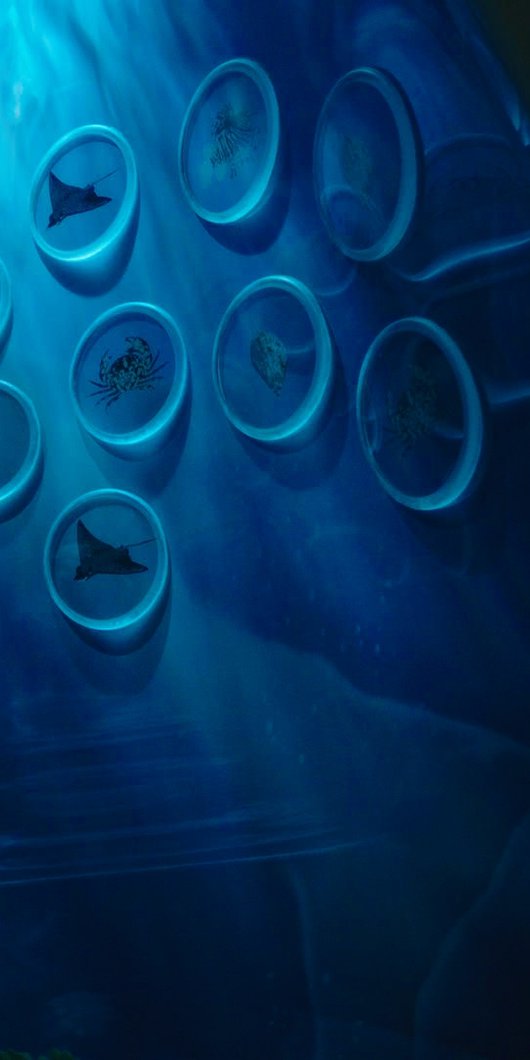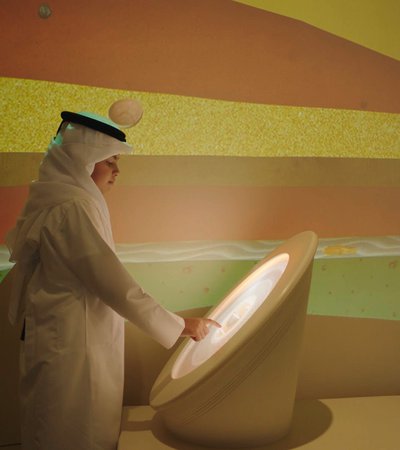People have been at the heart of the museum’s vision and development. As a result, the National Museum of Qatar offers all our visitors a multifaceted and immersive experience no matter their age or knowledge of our nation’s history and its people. We pride ourselves on the way the story is told through a succession of multilayered exhibits that include archival images, digital interactivity and educational games as well as sensory elements such as audio, scents and tactile models.
Kids in Museums Manifesto
Our manifesto is a set of simple guidelines for museums, created in collaboration with children, young people and families. It sets out what they feel makes a museum a great place to visit.
- Be welcoming. Create an environment where families can explore, have fun and learn together. Make sure staff and volunteers provide a warm welcome and make all interactions with visitors friendly and informative. Include objects that can be touched, and use clear labels to communicate when and why other objects cannot be touched. Welcome enthusiastic comments and always keep instructions positive.
- Make it easy and comfortable. Think about your facilities and spaces from a family's perspective. Have seating for all generations to enjoy a rest. Can you provide a picnic area, make your café family friendly or direct people to reasonably priced eateries nearby? Having baby-changing facilities, a breastfeeding welcome attitude, booster steps in your toilets and somewhere to keep buggies is important for those with younger visitors.
- Remember families come in all shapes and sizes. Consider what different family members need from their visit and provide ways for them to explore together. Families can include children under, young people, parents, carers, grandparents, cousins and friends. Reflect this diversity in your activities, displays and ticketing.
- Be accessible to all. Ensure all your visitors are equally supported and welcomed. Families face many challenges when visiting museums, including the cost of a visit and language and cultural barriers. For those with disabilities, it may be difficult to access your space and its collections. Ask a range of children, young people and families how you can better communicate with them and make their visit easier.
- Communicate well. Make sure you let families know everything you have to offer them. You can do this through outreach visits, posters and leaflets, and online through your website and social media. Think about where families might find information before a visit and communicate clearly on arrival.
- Work together. Collaborate with children, young people and families as equal partners on events, displays and exhibitions. This will help you to include their stories and give them a stronger sense of ownership.


